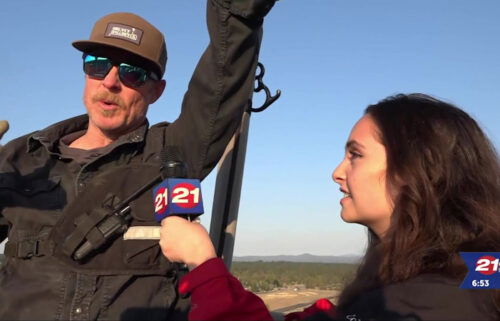Relying on melting glaciers as water source could spell trouble for Central Oregon, expert says
(Updated: adding video, comments from president of Oregon Glaciers Institute)
Water supplies are low, temperatures are high and glaciers are melting
BEND, Ore. (KTVZ) -- In the summer, the snow from the mountains melts, and that's where Central Oregon gets its water. Since the region faces an extreme drought, that snowpack has already melted.
So our water source is coming from melting glaciers.
However, what does that mean for the local environment and wildlife?
Central Oregon used to have 29 glaciers, a half-century or so ago. That number has since dropped to 15, experts say. And it's expected to keep dropping.
Satellite images of the Three Sisters and Broken Top region show how the snowpack has changed over time.
In July 2019, there was a significant amount of snow on the mountains. In 2020, that amount became less, and has dropped even further, if we look at its current situation.
The president of the Oregon Glaciers Institute says Central Oregon is on a path to having no snow or glaciers -- which will impact the quality of life here in many ways.
"We're just going to be changing what lives in our mountains, and that will have all sorts of unintended consequences for the species that are losing area," Carlson said Wednesday. "Everything is going up, everything migrating up. Just as it gets warmer, as you go to higher elevations, you're trying to keep the same temperature. So you just go up the hill slope, so everything will migrate up the slope. And eventually, there's a top of the mountain, though."
Carlson says Central Oregon is on its way to one day becoming the next Las Vegas or Phoenix -- cities that rely on outside water sources to sustain their communities.
"That'll be the case in Bend. This daytime temperature might be too hot to do something outside, and so those trail runs you take in the afternoons, and the summers in the cool trees, it'll be different. It'll be drier and hotter, and the quality of life will change." Carlson told NewsChannel 21.
There's no way to predict how fast this change will happen. Carlson says it could be decades -- so it's not too far away, but also won't happen tomorrow.




